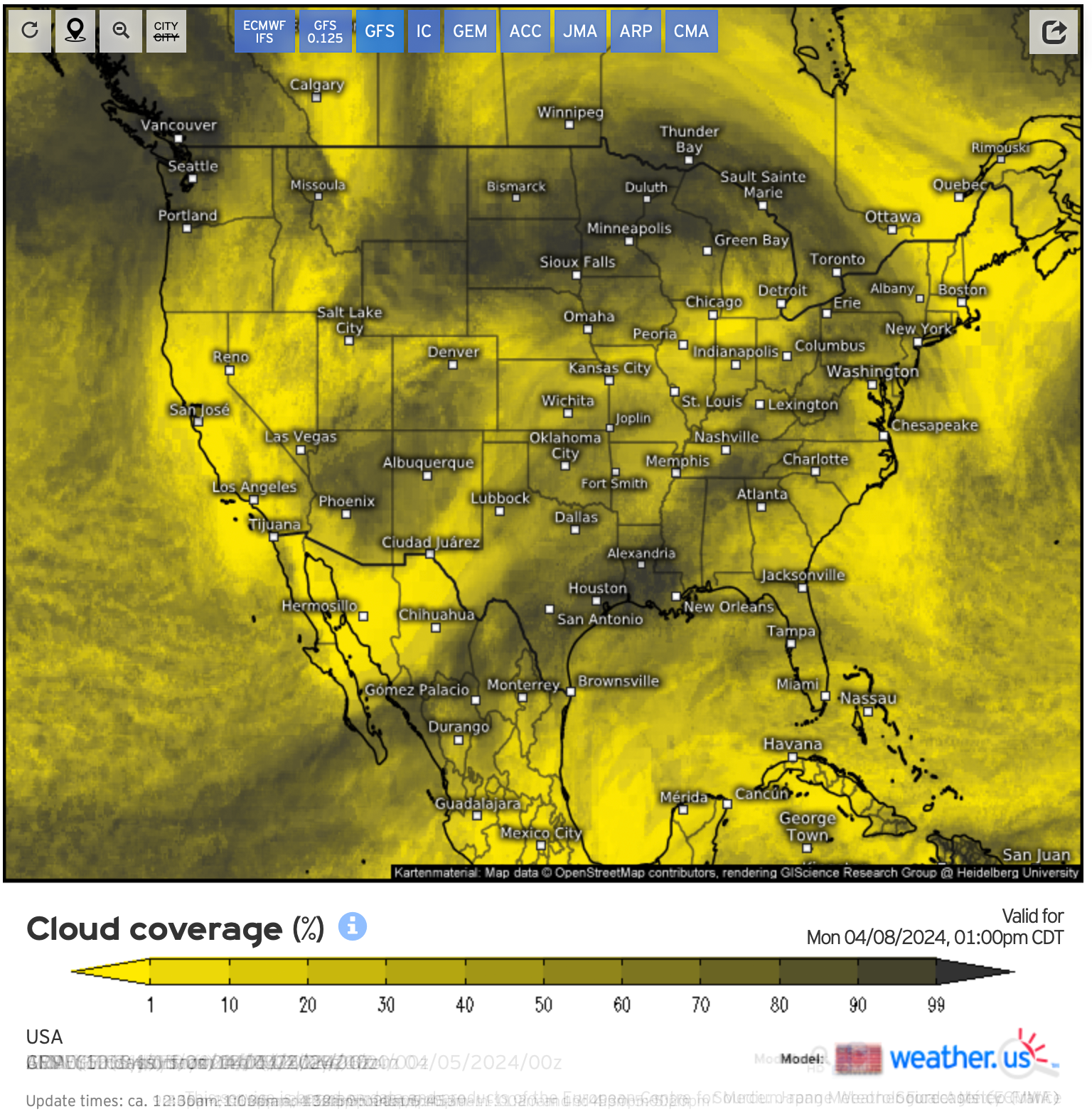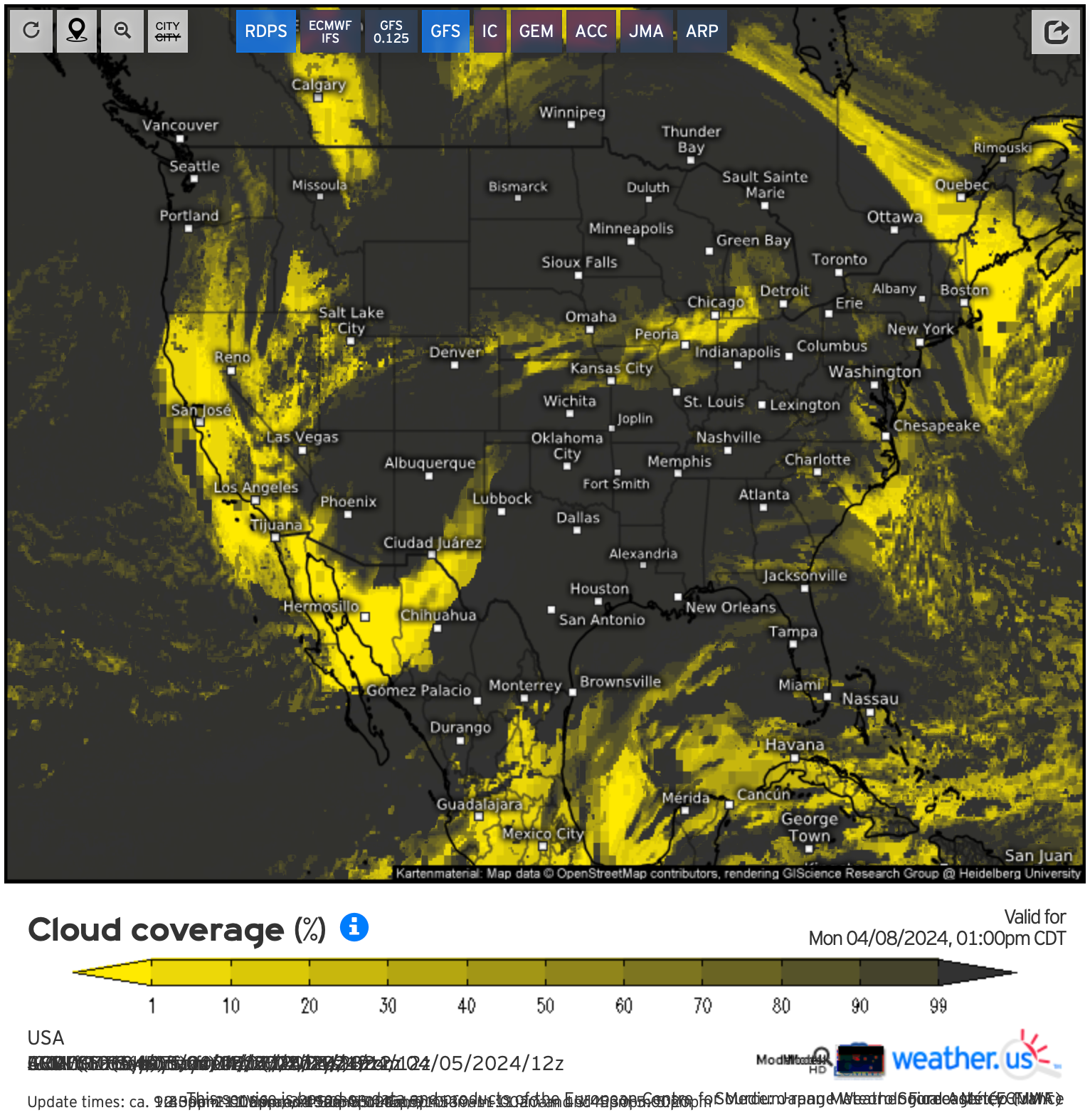Eclipse Day Cloud Coverage Model at T-78 Hours
We’re getting close now! But not close enough that the models concur, unfortunately. As it has been for the last few runs now, the forecast is indicating a line of clouds traveling through the zone of totality near the time of totality. Where this line of clouds will be during totality remains inconsistent, although I think the models have generally trended this line eastward. Here’s the most recent mean of the available cloud forecasts:
T-78 Hours Mean
Links to the original content:
https://weather.us/model-charts/euro/usa/total-cloud-coverage/20240408-1800z.html
https://weather.us/model-charts/gfs-hd/usa/total-cloud-coverage/20240408-1800z.html
https://weather.us/model-charts/german/usa/total-cloud-coverage/20240408-1800z.html
https://weather.us/model-charts/can/usa/total-cloud-coverage/20240408-1800z.html
https://weather.us/model-charts/aus/usa/total-cloud-coverage/20240408-1800z.html
https://weather.us/model-charts/jpn/usa/total-cloud-coverage/20240408-1800z.html
https://weather.us/model-charts/french/usa/total-cloud-coverage/20240408-1800z.html
https://weather.us/model-charts/cma/usa/total-cloud-coverage/20240408-1800z.html
And now let’s compare this with the model from T-222.
T-222 Hours Mean
You can see this eastward push that I am referring to.
This favors parts of Ohio, Indiana, Illinois, Missouri, and certainly Arkansas, while coming at the expense of parts of Upstate New York.
Here’s the T-78 hours model with an approximation of the line of totality for reference:
T-78 Mean with Reference Line
But, like I said, there’s still a ton of variation in the models. Let’s look at the T-78 maximum first (bright yellow indicating areas where at least one model calls for clear skies):
T-78 Hours Maximum
And compare this to the T-78 minimum (where black indicates where at least one model calls for total cloud cover):
My instinct is telling me that while the next 24 hours will push the models to a point similar to how they will appear at T-6, there is still going to be a significant amount of chaotic uncertainty. While you won’t be able to do much about the region you’ll be traveling to, you will be well-served to come up with multiple contingency locations for viewing in the region in which you are traveling and monitor the cloud cover up until the morning of the eclipse.
Find some tips and tricks on how to do this in my how-to guide: How to Choose a Solar Eclipse Viewing Location.
Gird up - it’s going to be a wild ride!
—————
Disclaimers: The information from weather.us included herein is done in a manner consistent with its terms and conditions, which you can read here. H.D. Hunt Photography is a noncommercial website and recognizes the copyright for this material is retained by the originator.
You can support H.D. Hunt Photography through a follow on Instagram:




